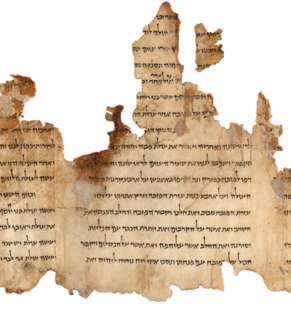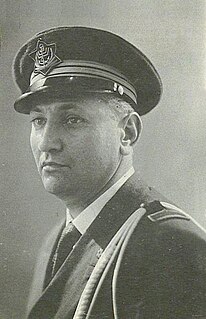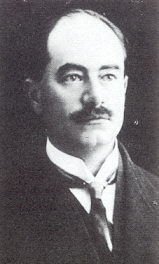
The Battalion for the Defence of the Language (Hebrew:גדוד מגיני השפה, pronounced: Gdud Meginei Hasafa) was a small but militant body established by Jewish students at the Herzliya Hebrew Gymnasium in Tel Aviv, Palestine in the 1920s to urge Jews to use only the Hebrew language. [1]

Tel Aviv is the second most populous city in Israel—after Jerusalem—and the most populous city in the conurbation of Gush Dan, Israel's largest metropolitan area. Located on the country's Mediterranean coastline and with a population of 443,939, it is the economic and technological center of the country.

Palestine is a geographic region in Western Asia usually considered to include Israel, the West Bank, the Gaza Strip, and in some definitions, some parts of western Jordan.

Hebrew is a Northwest Semitic language native to Israel; the modern version of which is spoken by over 9 million people worldwide. Historically, it is regarded as the language of the Israelites and their ancestors, although the language was not referred to by the name Hebrew in the Tanakh. The earliest examples of written Paleo-Hebrew date from the 10th century BCE. Hebrew belongs to the West Semitic branch of the Afroasiatic language family. Hebrew is the only living Canaanite language left, and the only truly successful example of a revived dead language.
Contents
The group campaigned against the use of other languages under the slogan "Jew, speak Hebrew." Its most prominent supporters were Mordechai Ben-Hillel Hacohen, a Hebrew writer, Zionist and one of the founders of Tel Aviv, and Zvi Yehuda Kook, the son of the chief rabbi Abraham Isaac Kook. [2]

Zvi Yehuda Kook was an Orthodox rabbi, a prominent leader of Religious Zionism, and Rosh Yeshiva of the Mercaz HaRav yeshiva. He was the son of Rabbi Abraham Isaac Kook, the first Ashkenazi chief rabbi of British Mandatory Palestine.

Abraham Isaac Kook was an Orthodox rabbi, the first Ashkenazi chief rabbi of British Mandatory Palestine, the founder of Yeshiva Mercaz HaRav Kook, a Jewish thinker, Halakhist, Kabbalist, and a renowned Torah scholar. He is known in Hebrew as הרב אברהם יצחק הכהן קוקHaRav Avraham Yitzchak HaCohen Kook, and by the acronym הראיה (HaRaAYaH), or simply as HaRav. He was one of the most celebrated and influential rabbis of the 20th century.
The Jewish (mostly Yiddish) press tended to portray the group as "a gang of fanatic, insolent hoodlums" and although the battalion was sometimes involved in violence it acted largely "as patriotic watchdog, barking loudly and baring its teeth but seldom actually biting." [3]
Yiddish is the historical language of the Ashkenazi Jews. It originated during the 9th century in Central Europe, providing the nascent Ashkenazi community with a High German-based vernacular fused with elements taken from Hebrew and Aramaic as well as from Slavic languages and traces of Romance languages. Yiddish is written with a fully vocalized version of the Hebrew alphabet.
On 15 August 1929, the Jewish fast of Tisha B'Av, 300 youths led by Jeremiah Halpern, who were mostly from the Battalion with some from Betar and other youth movements, made political speeches, raised the Zionist flag and sang the Zionist anthem at the Wall. A counter-demonstration by Muslims on the following day was followed by violent incidents and subsequently led to the 1929 Palestine riots and especially the destruction of the Jewish community in Hebron. [4]

Tisha B'Av is an annual fast day in Judaism, on which a number of disasters in Jewish history occurred, primarily the destruction of both Solomon's Temple by the Neo-Babylonian Empire and the Second Temple by the Roman Empire in Jerusalem.

Captain Jeremiah Halpern was a Revisionist Zionist leader in Palestine who first came to prominence when he served as aide de camp to Ze'ev Jabotinsky in the 1920s when the latter was head of the Haganah in Jerusalem.

The Betar Movement is a Revisionist Zionist youth movement founded in 1923 in Riga, Latvia, by Vladimir (Ze'ev) Jabotinsky. Chapters sprang up across Europe, even during World War II. After the war and during the settlement of what became Israel, Betar was traditionally linked to the original Herut and then Likud political parties of Jewish pioneers. It was closely affiliated with the pre-Israel Revisionist Zionist splinter group Irgun Zevai Leumi. It was one of many right-wing movements and youth groups arising at that time that adopted special salutes and uniforms. Some of the most prominent politicians of Israel were Betarim in their youth, most notably prime ministers Yitzhak Shamir and Menachem Begin, an admirer of Jabotinsky.









